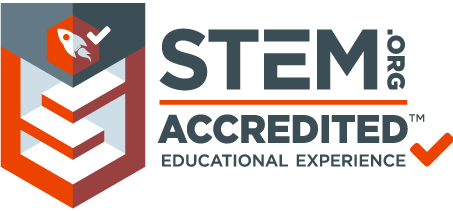Need For STEM Education in India
‘STEM Education’, known for its focus on Science, Technology, Engineering and Maths, is relatively a new term in the Indian education sector.
A robust STEM education creates critical thinkers, problem-solvers, and next generation innovators. Taking into consideration that India is one of the countries that produces the highest number of scientists and engineers, the growth of STEM has picked up significantly over the last few years.
Increasing demand
We are now at a stage where the number of STEM jobs is growing at a fast pace and currently outstripping the number of STEM graduates. According to the National Science Foundation, it is predicted that 80% of the jobs created in the next decade will require some form of math and science skills. Despite having the top quality talent, the exam-focused education model of the past has limited these students when it comes to innovation, problem-solving and creativity. This is where the STEM players come in to fill this gap.
Research shows that children develop interest in STEM fields at an average age of eight. This is due to the fact that technology, gadgets and gizmos fascinate them. But, the leap from being a user of technology to an innovator rarely happens and, if at all, it is a very slow transition. The link between engineering-technology-entrepreneurship is evidently missing in India.
Communication technology giant, Verizon, recently announced the winners of their annual Innovative Learning App Challenge, in which middle and high school students across the U.S. were challenged to develop mobile app concepts that solve a problem in their local communities. Promoting teamwork, critical thinking, problem-solving, STEM skills and coding, the app challenge attracted over 1,800 submissions, with awards available at state, regional and national levels.
It is essential that schools are provided with the tools and funding to build STEM into their curriculum and bring it to life in the classroom, inspiring the next generation of coders. Since the last few years, STEM developers have been incorporating innovative techniques to ensure that children are more inclined as well as interested in the ‘Do It Yourself’ method.
In India, though nascent, there is a lot of innovation which is taking place with regard to STEM.
The education sector is looking beyond smart classrooms towards hands-on learning and STEM enhancement on their current information and communications technology and smart class platforms.
Many STEM companies are working with schools to help them set up STEM centres, tinkering labs with upcoming technologies like Virtual Reality and Augmented Reality. The government is looking to help educational institutions to upgrade their library infrastructures with more engaging learning assets and management tools, and implementing Learning Management Systems, assessment systems, language labs, library management system etc.
New ‘entry level’ coding devices are coming to market that provide schools with the ability to teach simple coding and bring STEM to life in the classroom.
Challenges
One of the biggest challenges involved in the implementation of STEM education is to design infrastructure, curriculum and to equip children with the best guidance and support. Another challenge could be funding. Schools require money for construction of Maker spaces, DIY (Do it Yourself Tools), and best computers, which are some of the basic aspects of the STEM education.
Investing in educating the ecosystem about the need for such programmes is one of the ways of overcoming these limitations. Many of the educators still think that by introducing STEM, students will get diverted from their studies and they would not be able to complete their defined curriculum in that stipulated amount of time. The only way to address this is by making them aware and changing their beliefs by showing them the positive results of introducing their kids to STEM learning methodology.
Countries around the world are adopting this methodology by introducing national curricula that set frameworks and projects which apply the STEM methodology. In the U.K., BBC developed the micro:bit, a small inexpensive codeable device linked to a rich environment that allows teachers to link STEM to real life problems. The U.K. rolled out the micro:bit project to one million children in 2016 and several other countries have followed including Singapore and Iceland.
Several countries, upon realising the potential of a STEM-incorporated programme, have risen to the occasion and persuaded their respective governments, districts and schools to make the transition. Japan, for example, has already taken the first steps towards this methodology by introducing national STEM frameworks for 2020 and others are quickly joining as well.
Being the second most populated country with unmatched talent and culture, India needs a combined support from government and other education societies to avail the opportunity and benefits of STEM education. Now, with the Government of India also focussing on campaigns such as ‘Make in India’ Innovation Mission, there is focus on developing innovation and manufacturing right from schools. This will be the right time for India to rise to the challenge and develop a culture of application-based learning and innovation among the schools, students, colleges, and teachers.
-Aquib Amir
PIA Delhi

About Author: Aquib Amir has a total work experience of 7 months in STEM Learning. He is a STEM Educator.

